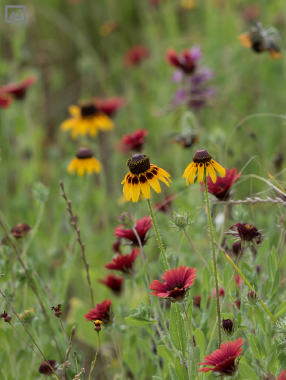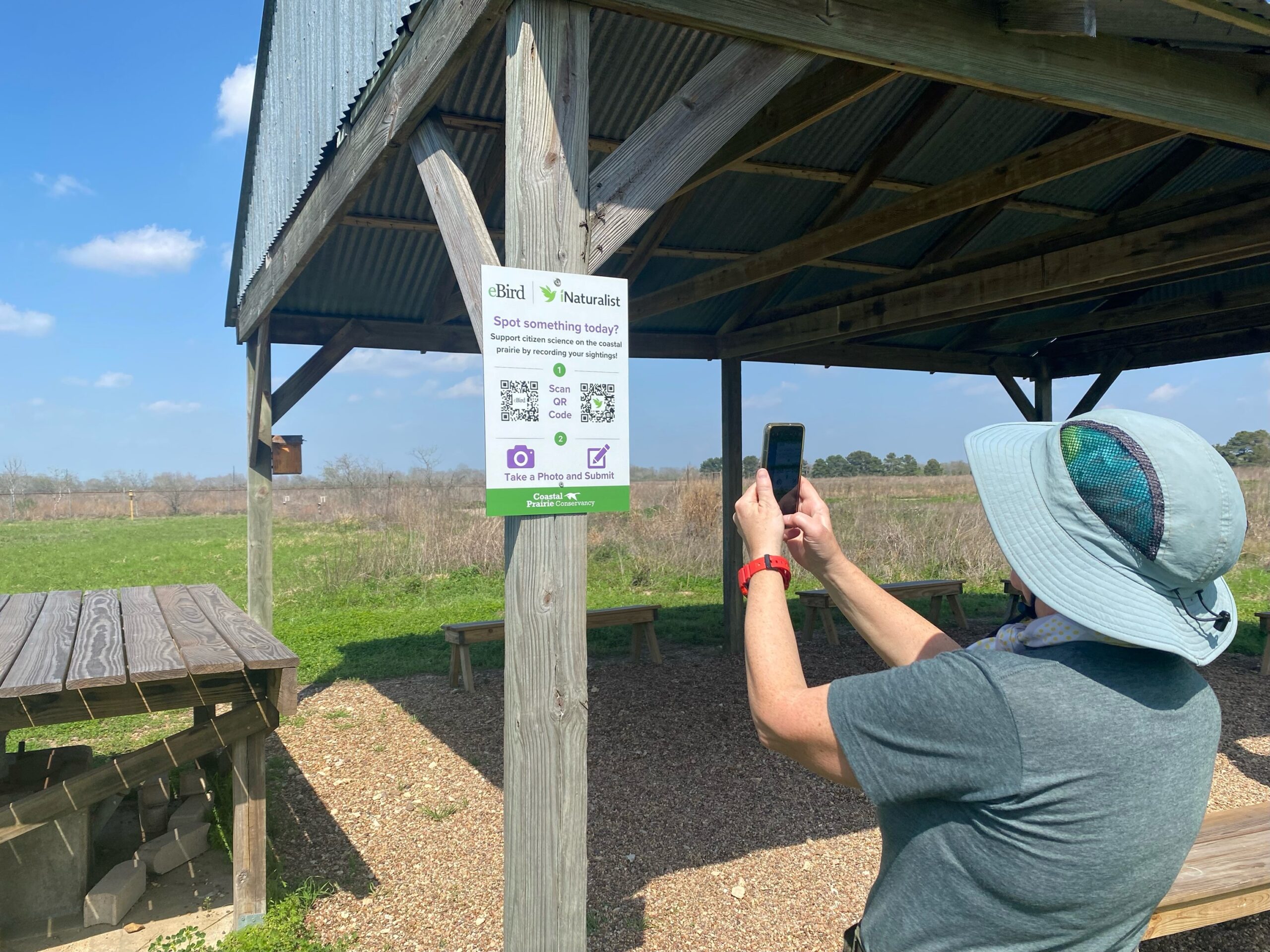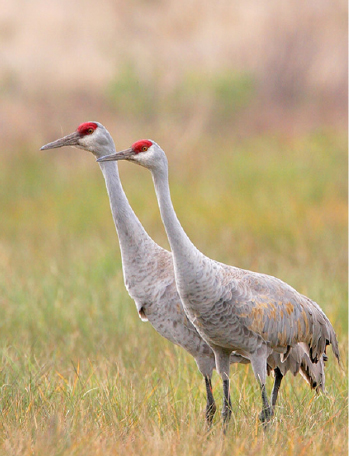Coastal Prairie Conservancy
Why Bird Conservation?
In 2020 and 2021, when Coastal Prairie Conservancy (CPC) in Houston, Texas, was conducting outreach to encourage more people to get out birding, the organization had no choice but to use Zoom to reach the public. During the first year of the COVID-19 pandemic, in-person events were not possible, but the success of the land trust’s online outreach became a silver lining of this challenge, says Ali Flanders Dodson, Advancement Director at CPC.
Birding has always been an important component of CPC, which was known as Katy Prairie Conservancy until 2022. Established in 1992, the land trust was formed by a coalition of concerned citizens—including many local birders, farmers, conservationists, and hunters who were concerned about the loss of wetlands on the city’s west side, an important habitat for overwintering Snow Geese and other waterfowl.
Over the past 30 years, CPC has protected nearly 19,000 acres on the historic Katy Prairie, and the expansion of the land trust’s efforts into other coastal prairies in recent years inspired the organization’s name change. Much of CPC’s protected land is limited access, leased for hunting or agriculture, but the land trust has several preserves with trails or viewing platforms that are open to the public or open with guided access.
Encouraging people to explore the Katy Prairie Preserve and contribute data via eBird was one goal of CPC’s 2020 Cornell Land Trust Bird Conservation Initiative small grant project. In addition to the outreach, CPC was also working to restore 363 acres of its conserved Katy Prairie Preserve. By removing invasive species and replanting native grasses on these CPC properties, the land trust invested in the future of birding on the Katy Prairie, restoring habitat for species like Bobwhite Quail and Sprague’s Pipit and creating nesting sites for Mottled Ducks who live in adjacent wetlands.
Spotlight Resources: Important Bird Area (IBA), Bird-focused Habitat Management, eBird

Ensuring a diversity of habitats for a diversity of species is a guiding principle for Wesley Newman, Conservation Director at CPC. Balancing the many uses of the Katy Prairie’s working landscape is a work in progress, he says. From rice farming to waterfowl hunting to cattle grazing, the area is home to a rich tapestry of plant and animal species.
Enriching habitats and sustaining natural resource diversity is the focus of Newman’s work. As he puts it, his job is “to make sure that all the species that live here have their place.” And by focusing on prairie restoration on parcels that are adjacent to wetlands, Newman’s work benefits a host of water-dependent plant, bird, mammal, and invertebrate species too.
This project involved the restoration of 363 acres of limited access and wetland-adjacent grassland on CPC preserves in west Harris County and east Waller County, which have been designated as an Important Bird Area (IBA) by Audubon. An herbicide application in 2020 removed invasive species from one project site, providing a fresh start for restoration. Cover crops were grown on the site throughout the remainder of the growing season, then terminated to prepare for spring planting. A native prairie seed mix was planted in the spring of 2021, providing habitat for grassland species like Upland Sandpiper, Bobolink, Grasshopper Sparrows, and Lincoln Sparrows.
To encourage more people to get out birding, CPC hosted a webinar titled “Unplugged Adventure: Using eBird on the Katy Prairie.” A video produced for the webinar is still available to view on CPC’s website, and CPC staff estimates that it has reached over 4,000 people since it was first shared. In the 30-minute video, former CPC staff member Mikayla House provides instruction on getting started with eBird, and local birder and eBird reviewer John Berner shares advice and tips on birding in the area.
Along with the bird-focused habitat management work and outreach efforts, this grant project also involved bird monitoring funded by the National Fish and Wildlife Foundation. A bird monitoring protocol was developed by Bob Honig, who coordinated volunteers conducting this work on one of the restoration tracts. At the 145-acre project site, two eBird locations were designated: a restoration site and reference site. The restoration site had been burned in March of 2020 and was being grazed as the monitoring happened. The reference site was immediately adjacent to the restoration site, and it was densely overgrown with deep-rooted sedge and dewberry.
Six visits were made to each site in 2020 by teams of two to four volunteers, with data recorded in eBird under an account created for the monitoring team. Four years later, this monitoring work is still underway, with funding now provided by a corporate foundation grant. CPC was able to leverage their small grant success and the associated data collected in eBird to secure funding to continue their monitoring work, notes Flanders Dodson.
Making the Connection

“You almost have to be in a prairie to really understand the dynamics of the ecosystem. They’re not glamorous or flashy. They’re subtle, so to get people in them to experience what’s happening in the here and now is very important,” explains Newman.
Interpretive signs at Indiangrass Preserve, a site open the public, include QR codes linking to the location’s eBird hotspot, which makes it easy for viewers to submit eBird checklists at this site. Anecdotal evidence suggests a large uptick in birding at the preserve over the past few years, after their eBird webinar. And, according to Flanders Dodson, “Almost every birder we see on the prairie is using eBird.”
In general, CPC has observed increased interest in bird events in the area, so the land trust now includes an eBird element in much of its programming. As a result of this bird-related outreach, one local group, the Texas Master Naturalists, now makes monthly birding visits to the Katy Prairie and logs its sightings in eBird.
Because of the small grant project, CPC now has a few “showcase” prairie sites in different stages of restoration. Being able to show and photograph the plants, insects, and birds that return during the sequential process of restoration helps CPC tell the important story of coastal prairies. Having these sites to demonstrate the phases of prairie re-establishment has been instrumental in CPC’s educational efforts and applications for funding.
Flanders Dodson describes it like this: “The Katy Prairie Preserve is kind of like a patchwork quilt; each parcel has its own story and timeline.” Allowing visitors to see and experience the different stages of prairie restoration has helped CPC communicate the importance of conserving this unique habitat for wildlife and people.
Advice to Other Land Trusts
When working on a project like this, take more pictures than you think you need, advises Flanders Dodson. The success of virtual programs during the pandemic allowed CPC to reach people who may not have been able to access land trust properties, which meant that pictures and videos became important tools for telling the organization’s story. Images were especially useful for social media posts, which helped CPC stay connected to its audience.
If your project includes volunteers, identify a leader. Try to find people who are part of a community interested in the work you’re doing, as they’ll likely bring more volunteers along. For CPC, working with bird experts Bob Honig and John Berner was critical to the success of this project, as the two birders were able to recruit, train, and lead other volunteers in the use of eBird and in bird monitoring.
Next Steps

The work of prairie restoration is never ending, according to Newman. Removing invasives, conducting prescribed burns, replanting natives, and monitoring plant and animal species is always happening on CPC properties; each CPC parcel is at a different stage in the continual cycle of regeneration on the coastal prairie.
Funded by a grant, bird monitoring continues on the parcels that were the focus of the monitoring portion of this grant project, with the help of John Berner. Inspired by the success of this project, CPC is now developing a monarch program funded by the National Fish and Wildlife Foundation, which will also include a monitoring component and new pollinator habitat strips. Because, as Flanders Dodson notes, the sparrows have to eat—so when you have more birds on the prairie, you need to have more bugs and butterflies around to feed them.


